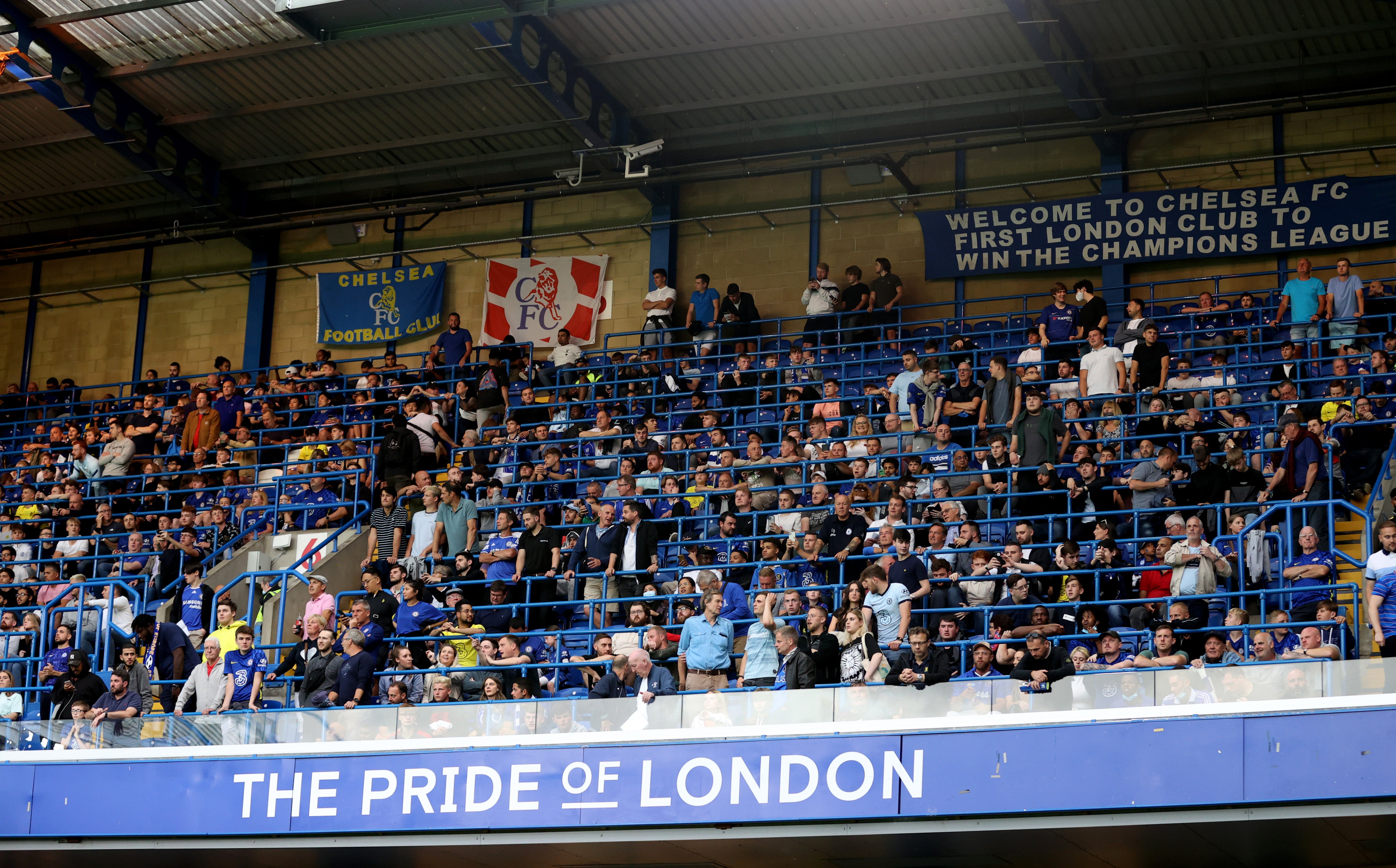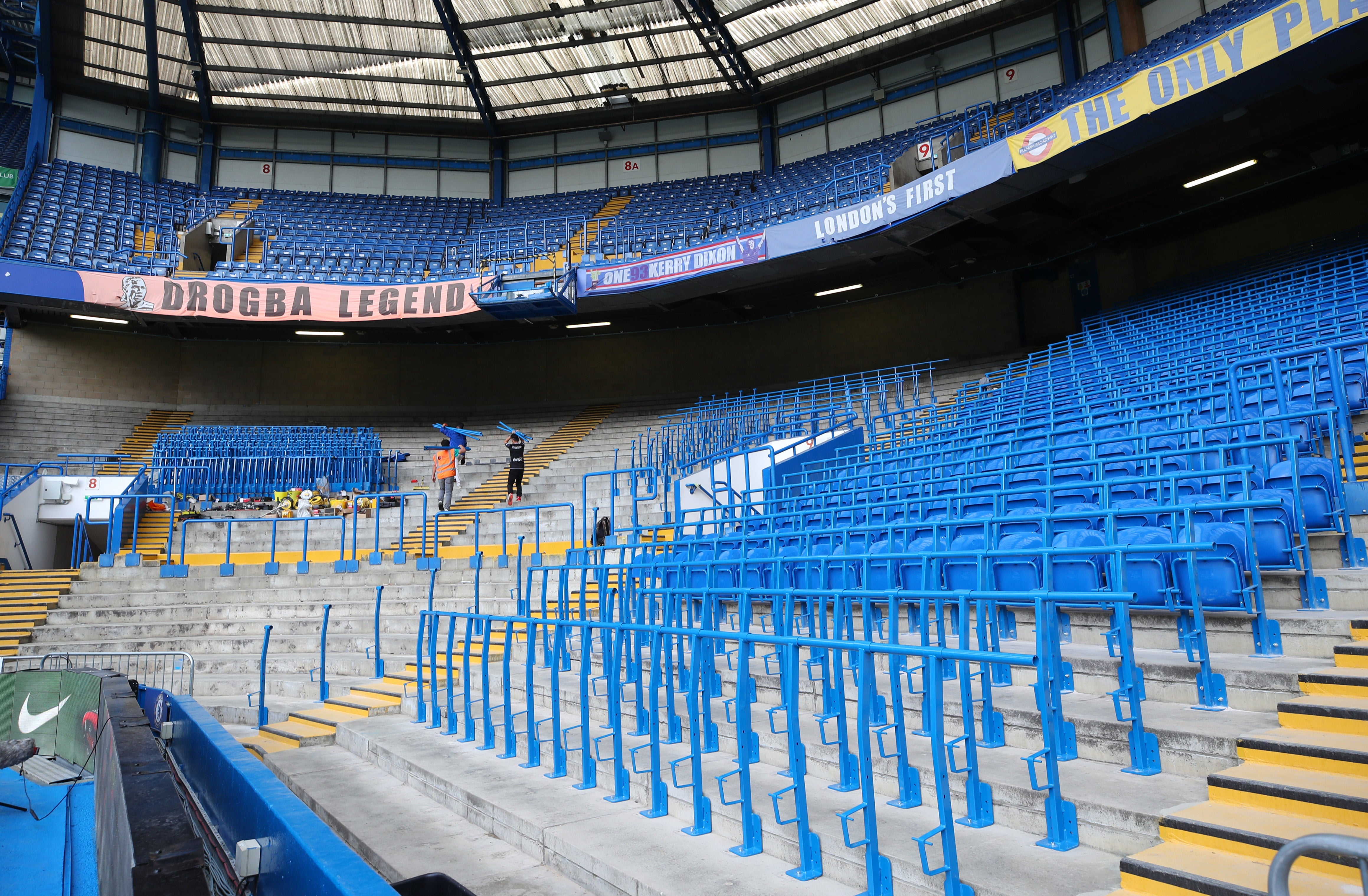Hillsborough and dispelling the myths around standing at football matches
The disaster’s legacy shouldn’t be all-seater stadiums. It should be a more inclusive game, with safer, more enjoyable football for a more diverse range of fans, writes Tony Evans


Your support helps us to tell the story
From reproductive rights to climate change to Big Tech, The Independent is on the ground when the story is developing. Whether it's investigating the financials of Elon Musk's pro-Trump PAC or producing our latest documentary, 'The A Word', which shines a light on the American women fighting for reproductive rights, we know how important it is to parse out the facts from the messaging.
At such a critical moment in US history, we need reporters on the ground. Your donation allows us to keep sending journalists to speak to both sides of the story.
The Independent is trusted by Americans across the entire political spectrum. And unlike many other quality news outlets, we choose not to lock Americans out of our reporting and analysis with paywalls. We believe quality journalism should be available to everyone, paid for by those who can afford it.
Your support makes all the difference.“If it wasn’t for the Scousers we could stand.” That grim, snide gibe at the Hillsborough disaster has rung out from too many Premier League crowds at Liverpool games over the years. In January it will be redundant. Fans will be allowed to legally remain on their feet in the top flight for the first time in more than a quarter of a century.
It is perhaps appropriate that Chelsea’s home fixture against Liverpool on 2 January is the first game in a pilot scheme where safe standing will be introduced and monitored for the second half of the season. Stamford Bridge has been the site of some of the worst behaviour relating to Hillsborough. Manchester United, Manchester City and Tottenham Hotspur join Chelsea in the trial, alongside the Championship’s Cardiff City. If the experiment is a success, there will be a wider rollout of standing sections across the two top divisions, where non-seated areas have been banned since 1994 (apart from grace periods for clubs promoted to the second tier to convert their stadiums).
The catalyst for the move to all-seater stadiums was the crush on the Leppings Lane of Sheffield Wednesday’s home ground 32 years ago that caused the deaths of 97 Liverpool supporters at the FA Cup semi-final against Nottingham Forest. The catastrophe remains one of the most misunderstood incidents in modern British history – to the point where Ian Byrne, the MP for Merseyside’s West Derby constituency, introduced an early-day motion to parliament on Monday that proposes adding Hillsborough to the national curriculum to increase awareness. There are similar pockets of ignorance about the reintroduction of standing.
Only this week an Arsenal fan blog asked: “Why return to a formula which failed?” The piece invoked Hillsborough, Heysel in 1985, Ibrox 1971 and Burden Park (sic), and the misspelling of Bolton Wanderers’ former stadium where 33 people died in a crush in 1946, is symptomatic of an argument based on a series of misapprehensions.
“The worst kept secret in football is that every ground has standing areas every week,” Pete Dakin, the coordinator of the Football Supporters’ Association’s safe standing campaign, says. “There are parts of every stadium where supporters spend most of the 90 minutes on their feet.”

Away ends, in particular, are almost impossible to keep seated. This presents problems for stewards and police trying to enforce the law or deal with the complaints of those who want to remain sitting down but find their view blocked.
“The system has been fundamentally broken,” Dakin says. “Common sense has finally prevailed.”
The revamp of stadiums to get rid of terracing came in the wake of Lord Justice Taylor’s inquiry into Hillsborough. Although the report concluded “standing accommodation is not intrinsically unsafe,” that assessment was undermined by the recommendation in favour of all-seater venues.
Rick Parry was the first chief executive of the Premier League in 1992 and is now chairman of the EFL. He recalls the mood at the time. “I was surprised that nobody had evidence to prove that standing was unsafe,” he says. “There were subsidiary arguments about estimating the capacity of terraces but the policing failure that caused Hillsborough could have happened with seats. But no one was going to argue with Taylor.”
Richie Greaves, who was in pen 3 on the Leppings Lane and is now secretary of the Hillsborough Survivors Association (HSA), agrees. “In the early days I was in favour of getting rid of standing,” he says. “It was an emotional thing. But it quickly became clear that standing was not inherently dangerous. I’m completely in favour of the introduction of safe standing.”
The fears expressed by opponents of the five-club experiment are reasonable but unfounded. They worry about overcrowding and unpredictable surges. The Arsenal blog even goes as far as saying, “If one person even scrapes their knee because of standing, that is one too many. If one person got injured, then football has failed that person. If the worst were to happen, blood would be on the hands of anyone who pushed this just for more revenue and/or those who wanted a better atmosphere… I can’t think of a single reason that justifies changing something that has proven to make going to football safer.”

Greaves can. His experience in 1989 qualifies him to judge the situation better than most, rejects any notion that the imminent changes are a threat to spectators. Injuries have become a regular by-product of standing in seated areas. “On the Kop people stand every week,” he says. “It’s pretty dangerous when you score a massive goal. Bodies go flying everywhere.
“I’ve got deep scars on both shins from the seats in front of me. You can end up falling on your back. It only takes one little slip. Safe standing will put a stop to all that.”
Rail seating, which has been installed at the five participating clubs, is designed to ensure such chaos does not happen. There is a barrier behind and in front of every individual that blocks downward pressure from behind. It is almost impossible to tumble into the row in front.
Overcrowding is not an issue, either. Each person occupies the same area that they would take up if they were sitting. Contrary to popular belief, clubs cannot use the new configuration to cram more bodies into the ground. Capacity is not affected and each supporter has an earmarked position and a traceable, numbered ticket. There is no possibility of a return to the heaving, swaying mass movement of the 1980s, where individuals could move around the terraces on a whim.
“The Sports Grounds Safety Authority [SGSA] have been superb,” Dakin says. “It’s been a gentle, evidence-led, data driven campaign that has taken into account the experiences in standing areas across the world.
“The only stadium that is completely safe is an empty stadium but there’s a spectrum of risk. The system that’s being introduced is at the safest end of that spectrum.”
Anyone hoping that standing will lead to a reduction of ticket prices is likely to be disappointed. Effectively, supporters are paying to occupy the same space and the seat will remain in place, unlocked, so that it can be used before the game and at half time. This is not a cheap option.
“What’s interesting is where we go from here,” Dakin says. “The original legislation [in the 1990s] was really bad and resulted in anomalies.” Clubs outside the top two divisions were allowed to continue with terracing, largely because the cost of making changes would have driven some smaller teams out of business. The new developments throw up questions for the future. “The law will need to be changed,” Dakin says. “What would happen, for example, if Peterborough United reached the Premier League? Sooner or later a team with [old-style] terraces will rise through the divisions. Clubs will have to sit down with experts and discuss what suits their ground. Safety has to be paramount.”
Dakin is clear about one thing. “The legacy of Hillsborough is not all-seater stadiums,” he says. “The disaster’s legacy is a more inclusive game, with safer, more enjoyable football for a more and more diverse range of fans.”
The introduction of safe standing underlines that point. There should be one less sneering ditty in the Hillsborough songbook.
Join our commenting forum
Join thought-provoking conversations, follow other Independent readers and see their replies
Comments